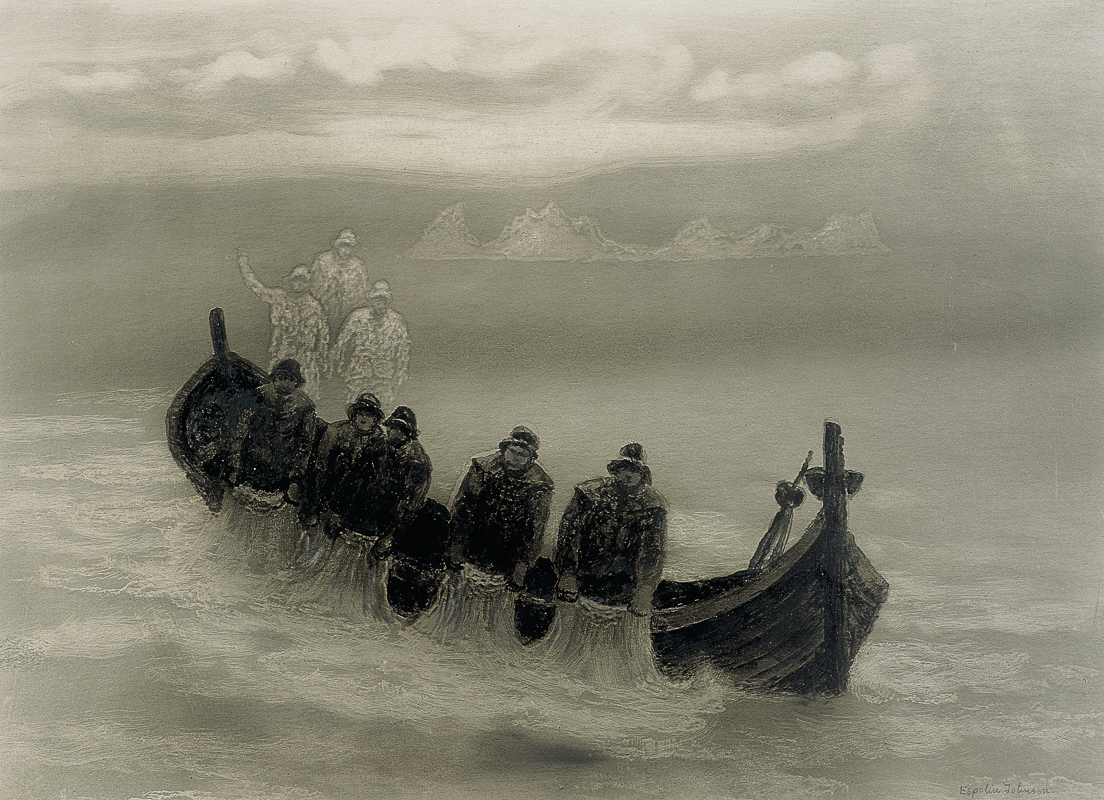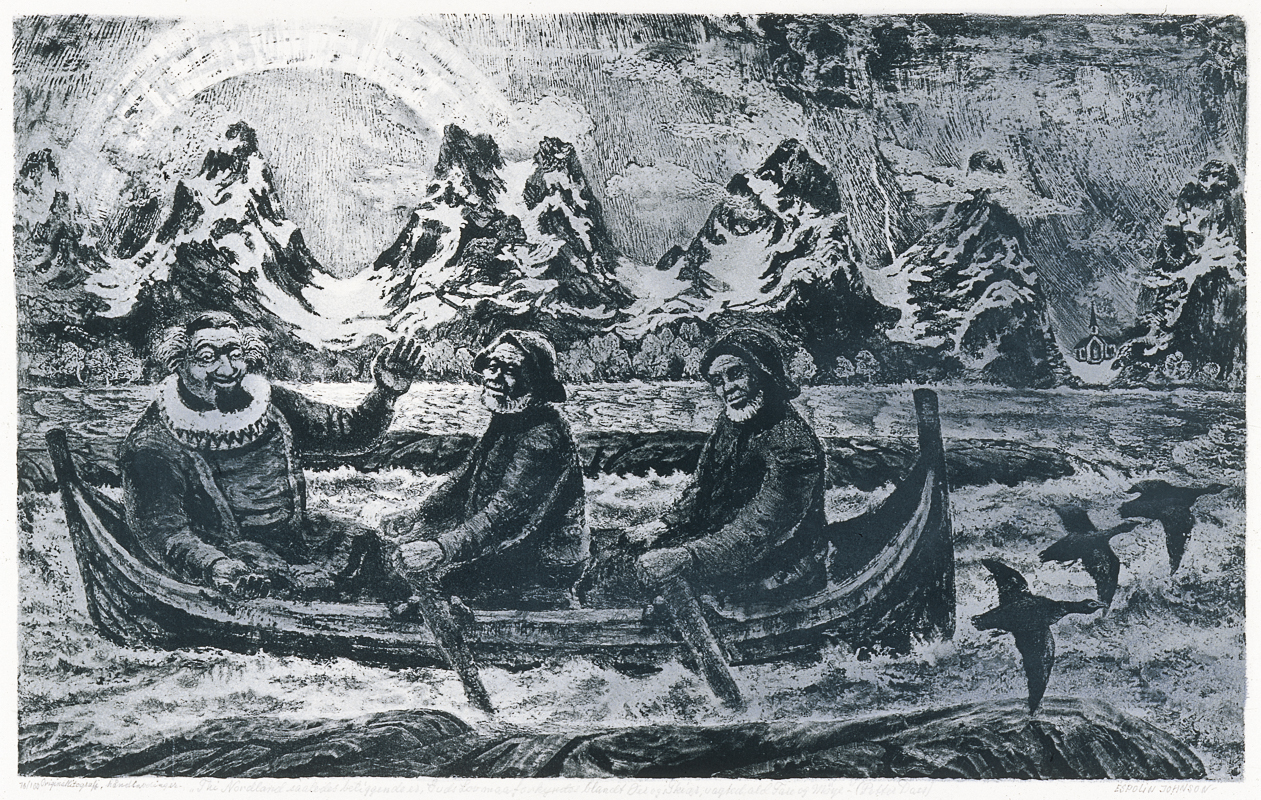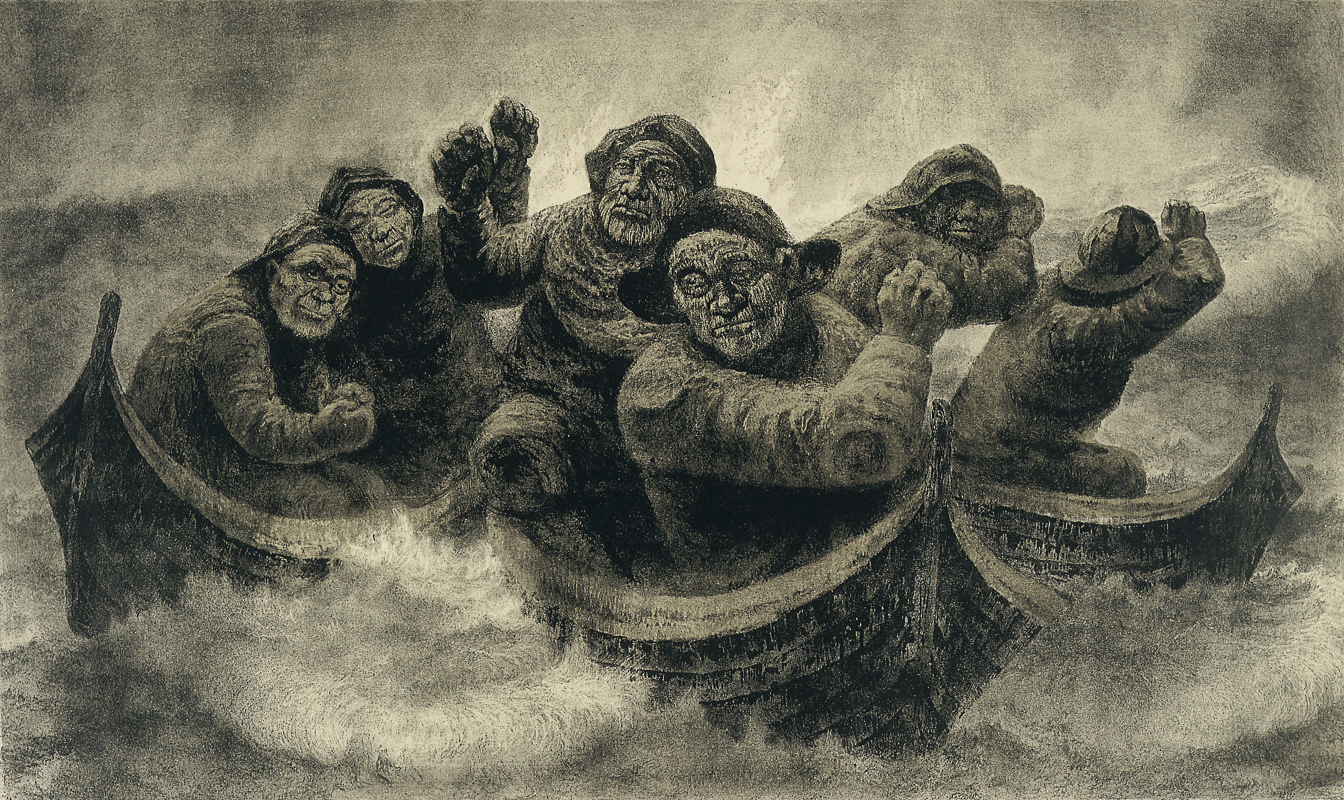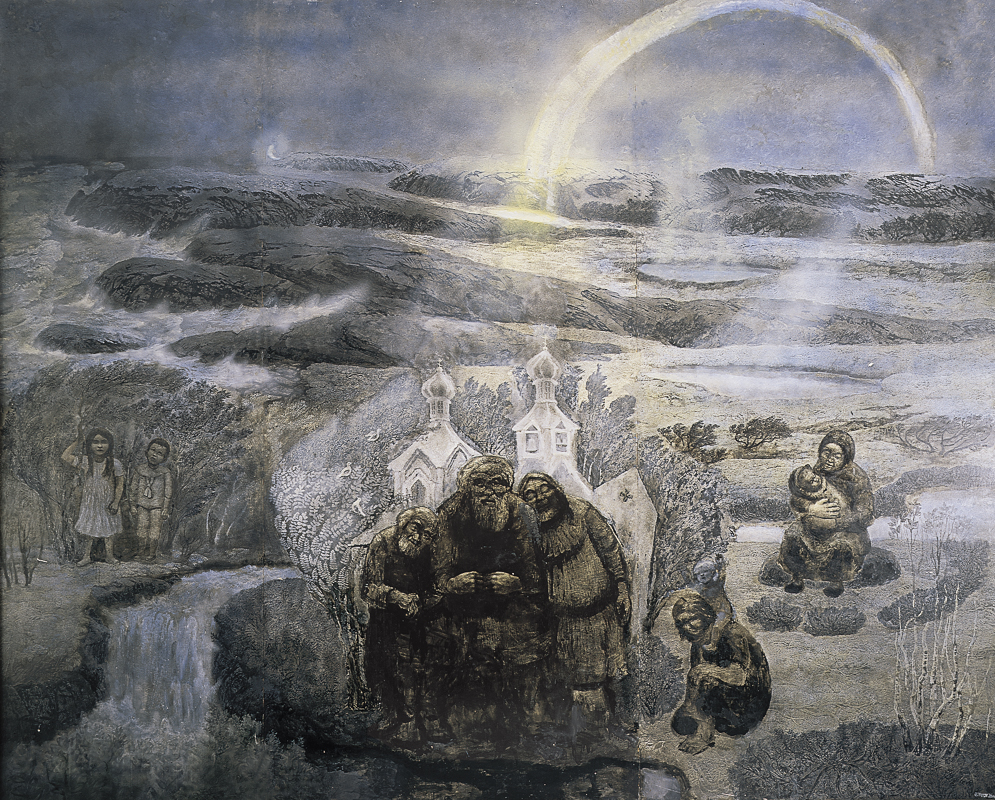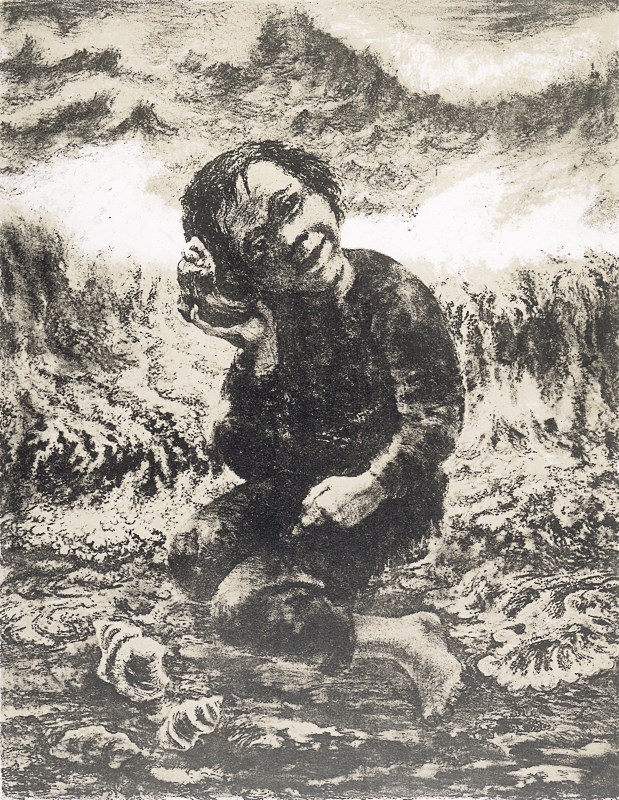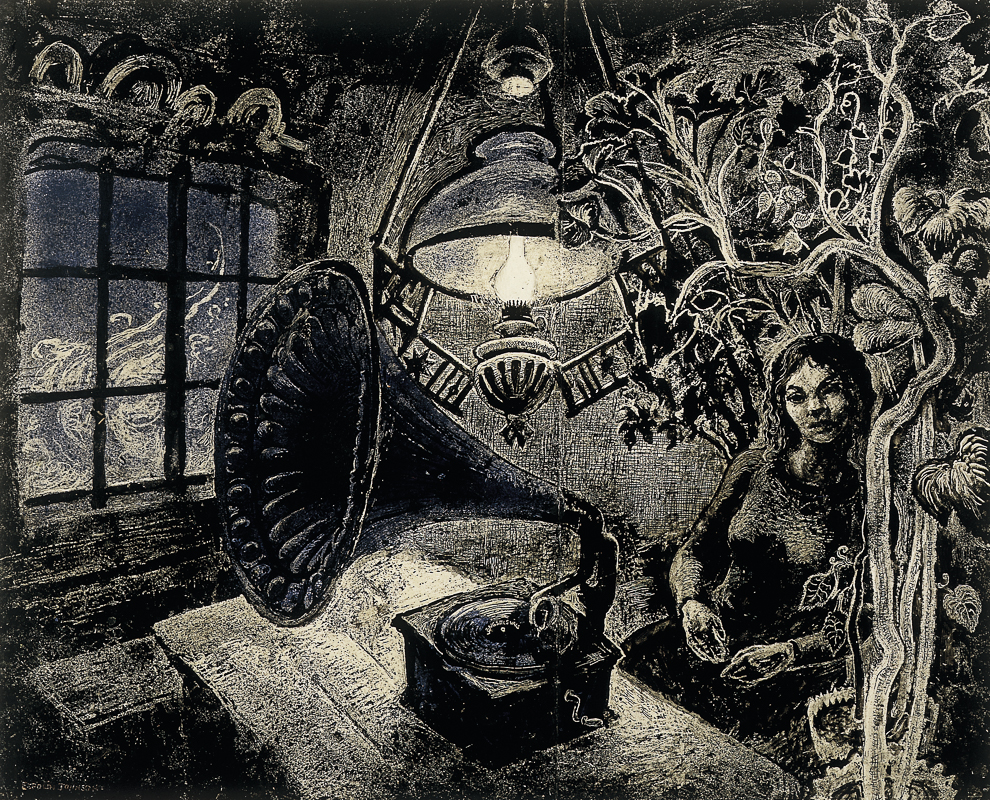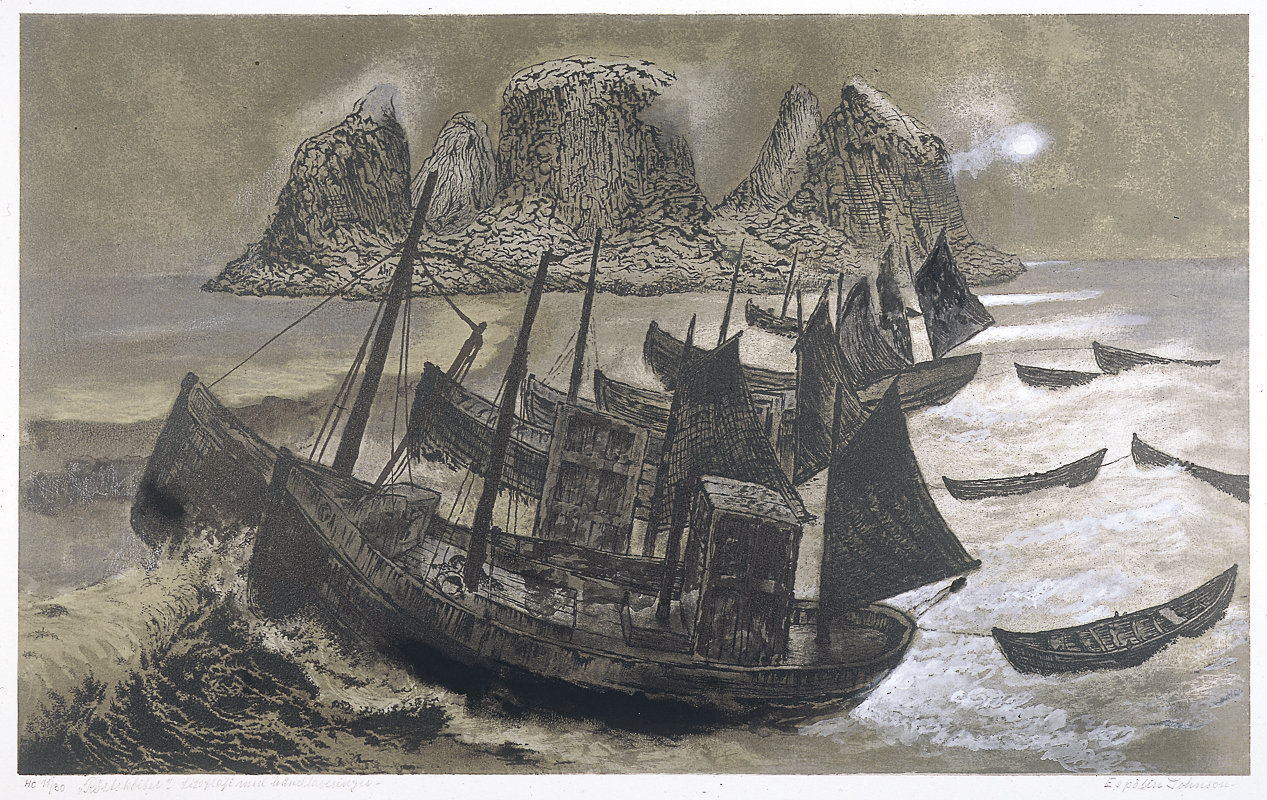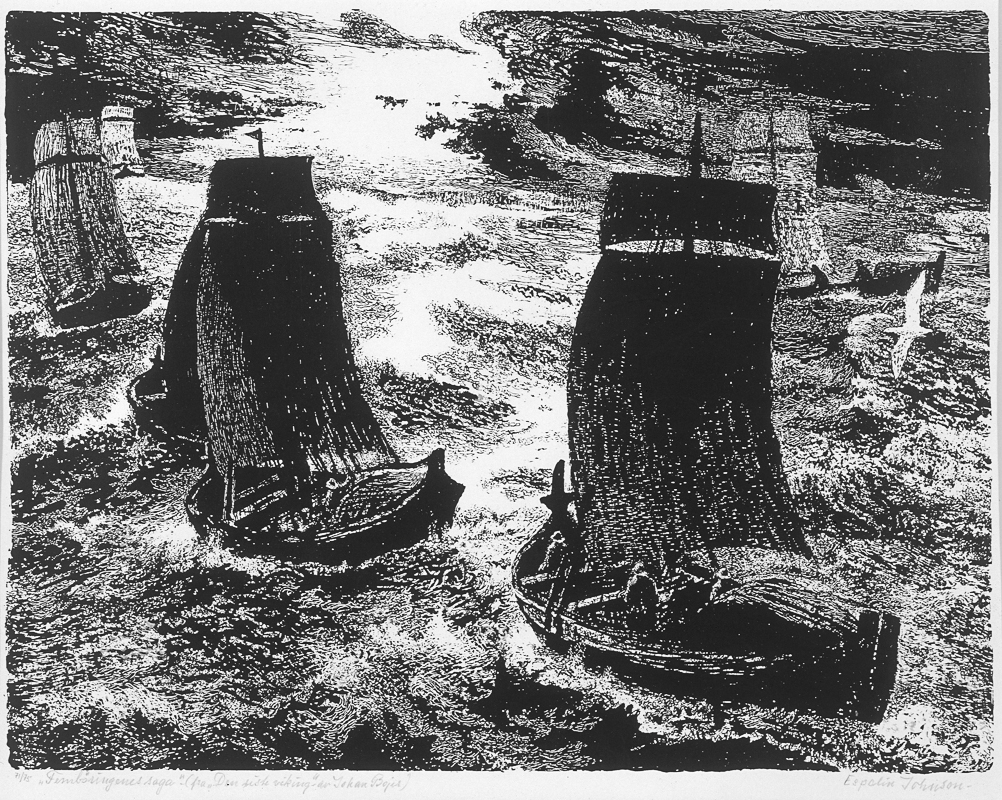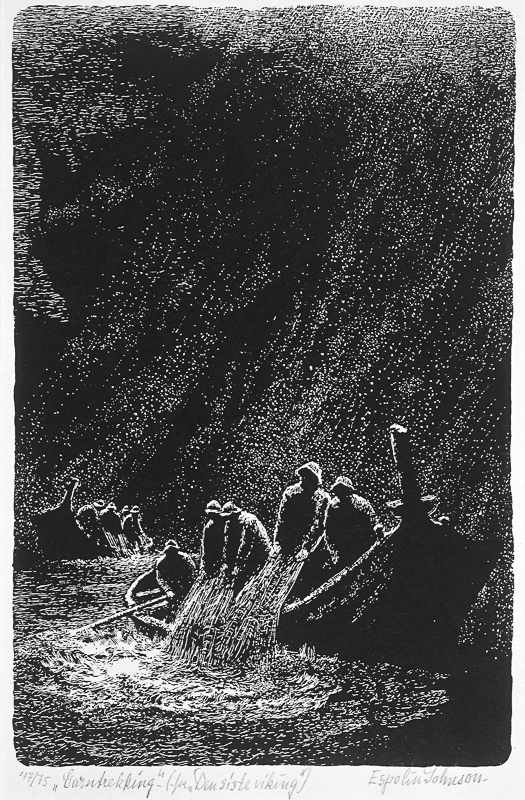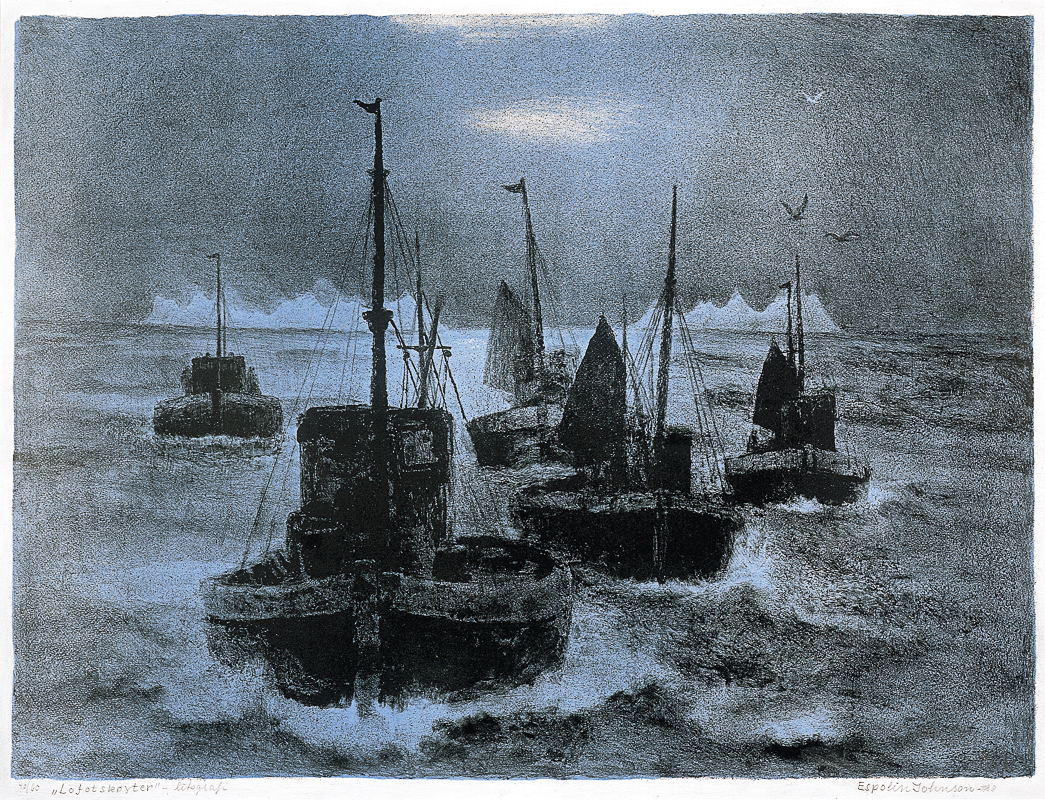The Lofoten islands were never a holiday paradise. Life here was relentless toil, in a brutal, inhospitable landscape. Yet, despite their toughness, the people are depicted with warmth and sympathy by North Norway’s own, much-loved artist, Kaare Espolin Johnson.
Dark, furrowed, concentrated faces. Boats and their crews in dark silhouette against the light. Storm, rough weather, the threatening Lofoten mountains. Simple, strong compositions. The harsh reality of life for the fishermen of these islands is drawn brutally and without compromise; but the people are depicted with warmth, love and humanity as they toil for their daily bread.
Eastern Finnmark was his childhood realm
By contrast, Kaare Espolin Johnson (1907-1994) portrays his early life in eastern Finnmark in luminous colours and with a lighter hand, with Sami costumes and Russian onion-shaped domes, the exotic, fairy-tale elements in this dream-like world of childhood. The artist lived in the town of Vadsø until he was 12 years old, and found the subsequent move to the much larger city of Bodø difficult. His memories of his childhood years in Vadsø were filled with wistfulness and longing.
Information about Kaare Espolin
Kaare Espolin was born in Surnadal in 1907 in Møre and Romsdal county.
Despite being born in Surnadal his family moved him to Vadsø, Finnmark at an early age. However, during his teenage years the family moved back south to Bodø.
The Norwegian National Academy of Craft and Art Industry and the Norwegian National Academy of Arts, both in Oslo.
Galleri Espolin, consecrated to the art and life of Kaare Espolin Johnson, is found in Kabelvåg, just west of Svolvær on the main road.
Lofoten Info gives a wealth of information on the islands.
Fading eyesight produced strong lines
Kaare Espolin Johnson spent most of his adult life as an artist in Oslo. He lost the sight of one eye as a relatively young man, and eventually developed cataracts on the other. This meant that he was able to distinguish few colours, and so concentrated on line and composition in his work.
Espolin was an artist for all fields
Espolin Johnson made his artistic debut at Statens Høstutstilling (the National Autumn Exhibition) in Oslo in 1932, and received his first decorative commission for the Hurtigruten vessel “Ragnvald Jarl” in 1956. He subsequently did the decorations for its sister ship, “Harald Jarl”, in 1960. Espolin Johnson was also a famous book illustrator, and among other things illustrated the popular collection of humorous tales of everyday life in North Norway called “Vett og uvett” (“Sense and Folly”) .
A Mixed technique adapted well to his vision
In 1925, during a power cut in Bodø, Kaare Espolin Johnson was playing with the sooty edge of a piece of paper partially burned by a candle flame. Seeing the soft, brown lines the flames had created, he was inspired to experiment further with black-and-white ink drawings and paintings. He later added colour, in watercolour or oil paints, thus creating his own special technique, which was well adapted to the restrictions imposed by his poor vision.
The Gallery is situated rightly on the wild coast of Lofoten
In the historic surroundings of the old fishing village of Storvågan, with views from the mainland and out towards Vågakallen, is Galleri Espolin, the gallery dedicated to the artist’s life and works. It has the largest collection of Kaare Espolin Johnson’s art in the whole of Norway. There is also a changing exhibition every summer. Galleri Espolin hosts an ambitious programme of exhibitions and concerts, and is one of the most popular and visited art experiences in North Norway.
